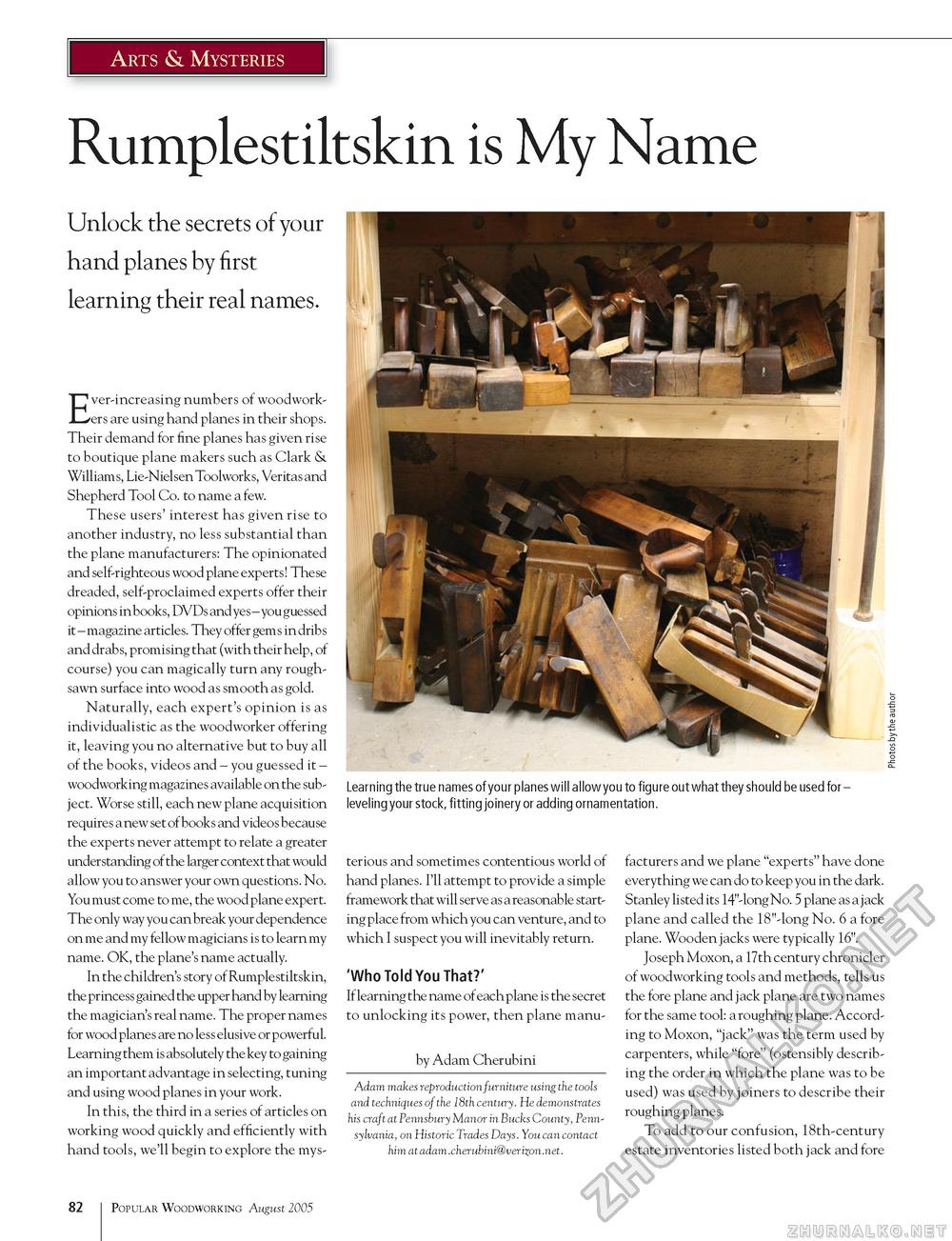Popular Woodworking 2005-08 № 149, страница 84
Arts & Mysteries Rumplestiltskin is My NameUnlock the secrets of your hand planes by first learning their real names. Ever-increasing numbers of woodworkers are using hand planes in their shops. Their demand for fine planes has given rise to boutique plane makers such as Clark & Williams, Lie-Nielsen Toolworks, Veritas and Shepherd Tool Co. to name a few. These users' interest has given rise to another industry, no less substantial than the plane manufacturers: The opinionated and self-righteous wood plane experts! These dreaded, self-proclaimed experts offer their opinions in books, DVDs and yes - you guessed it - magazine articles. They offer gem s in drib s and drabs, promising that (with their help, of course) you can magically turn any rough-sawn surface into wood as smooth as gold. Naturally, each expert's opinion is as individualistic as the woodworker offering it, leaving you no alternative but to buy all of the books, videos and - you guessed it -woodworking magazines available on the subject. Worse still, each new plane acquisition requires a new set of books and videos because the experts never attempt to relate a greater understanding of the larger context that would allow you to answer your own questions. No. You must come to me, the wood plane expert. The only way you can break your dependence on me and my fellow magicians is to learn my name. OK, the plane's name actually. In the children's story of Rumplestiltskin, the princess gained the upper hand by learning the magician's real name. The proper names for wood planes are no less elusive or powerful. Learning them is absolutely the key to gaining an important advantage in selecting, tuning and using wood planes in your work. In this, the third in a series of articles on working wood quickly and efficiently with hand tools, we'll begin to explore the mys- Learning the true names of your planes will allow you to figure out what they should be used for -leveling your stock, fitting joinery or adding ornamentation. terious and sometimes contentious world of hand planes. I'll attempt to provide a simple framework that will serve as a reasonable starting place from which you can venture, and to which I suspect you will inevitably return. 'Who Told You That?' If learning the name of each plane is the secret to unlocking its power, then plane manu- by Adam Cherubini Adam makes reproduction furniture using the tools and techniques of the 18th century. He demonstrates his craft at Pennsbury Manor in Bucks County, Pennsylvania, on Historic Trades Days. You can contact him at adam.cherubini@verizon.net. facturers and we plane "experts" have done everything we can do to keep you in the dark. Stanley listed its 14"-long No. 5 plane as a jack plane and called the 18"-long No. 6 a fore plane. Wooden jacks were typically 16". Joseph Moxon, a 17 th century chronicler of woodworking tools and methods, tells us the fore plane and jack plane are two names for the same tool: a roughing plane. According to Moxon, "jack" was the term used by carpenters, while "fore" (ostensibly describing the order in which the plane was to be used) was used by joiners to describe their roughing planes. To add to our confusion, 18th-century estate inventories listed both jack and fore 82 Popular Woodworking August 2005 |








